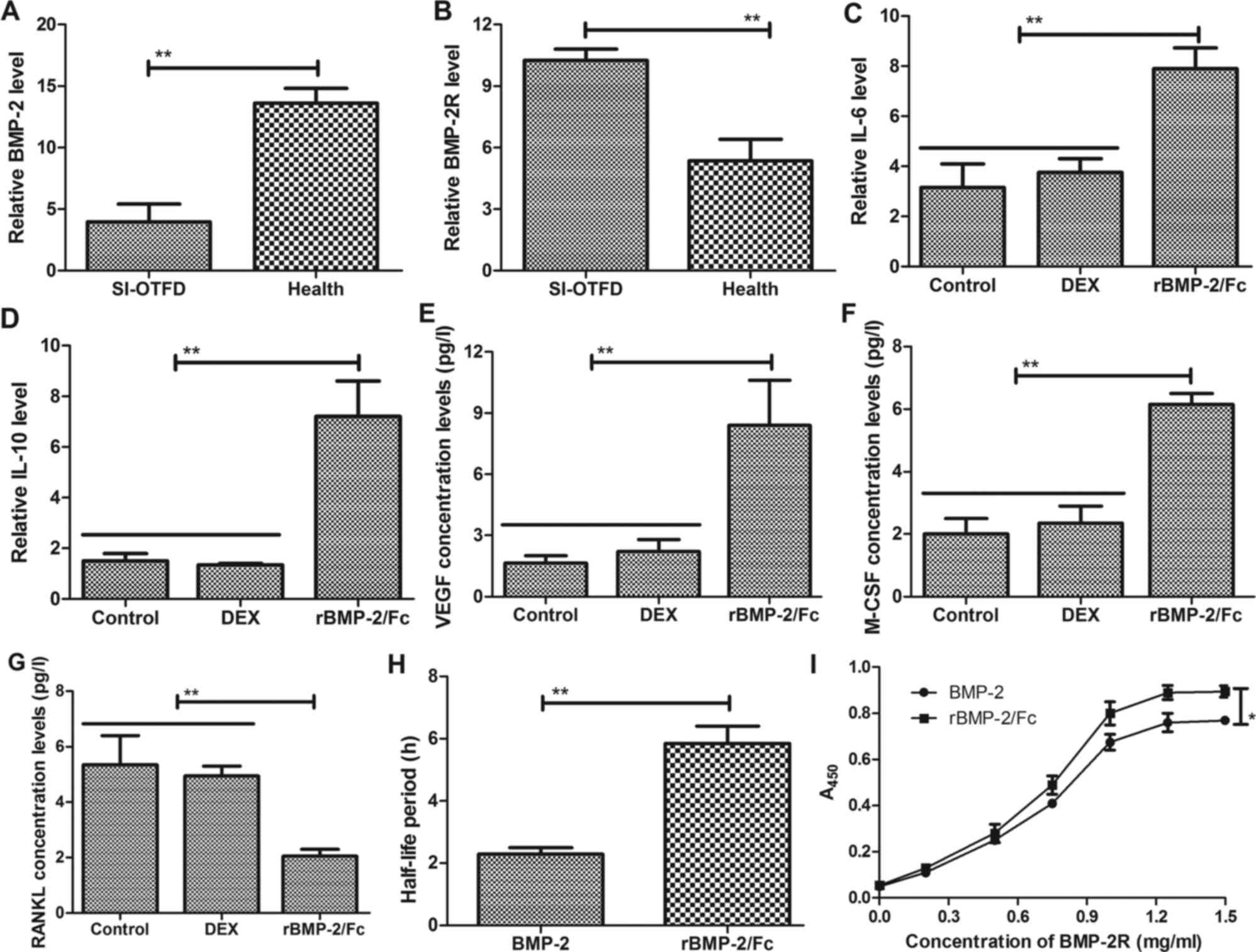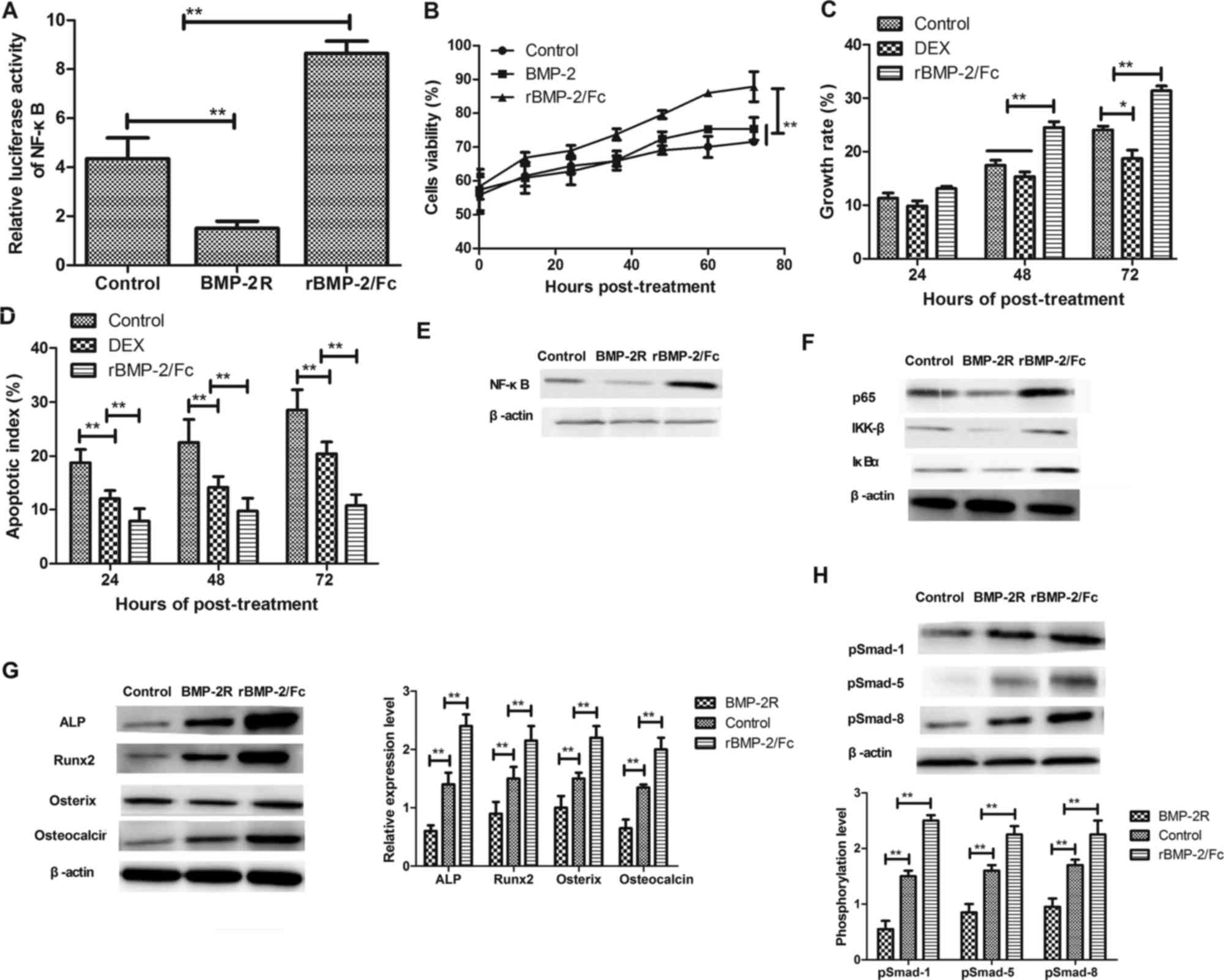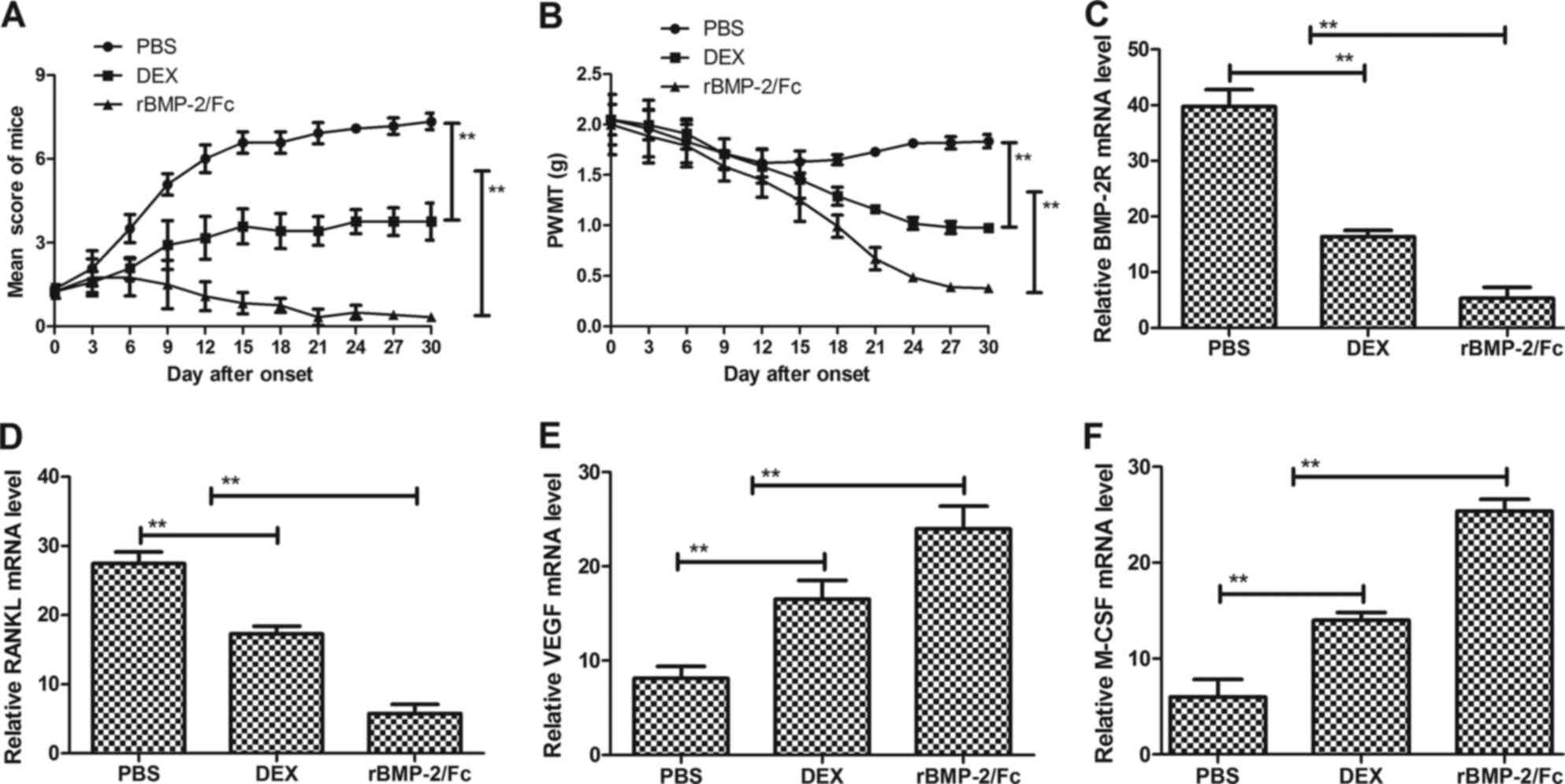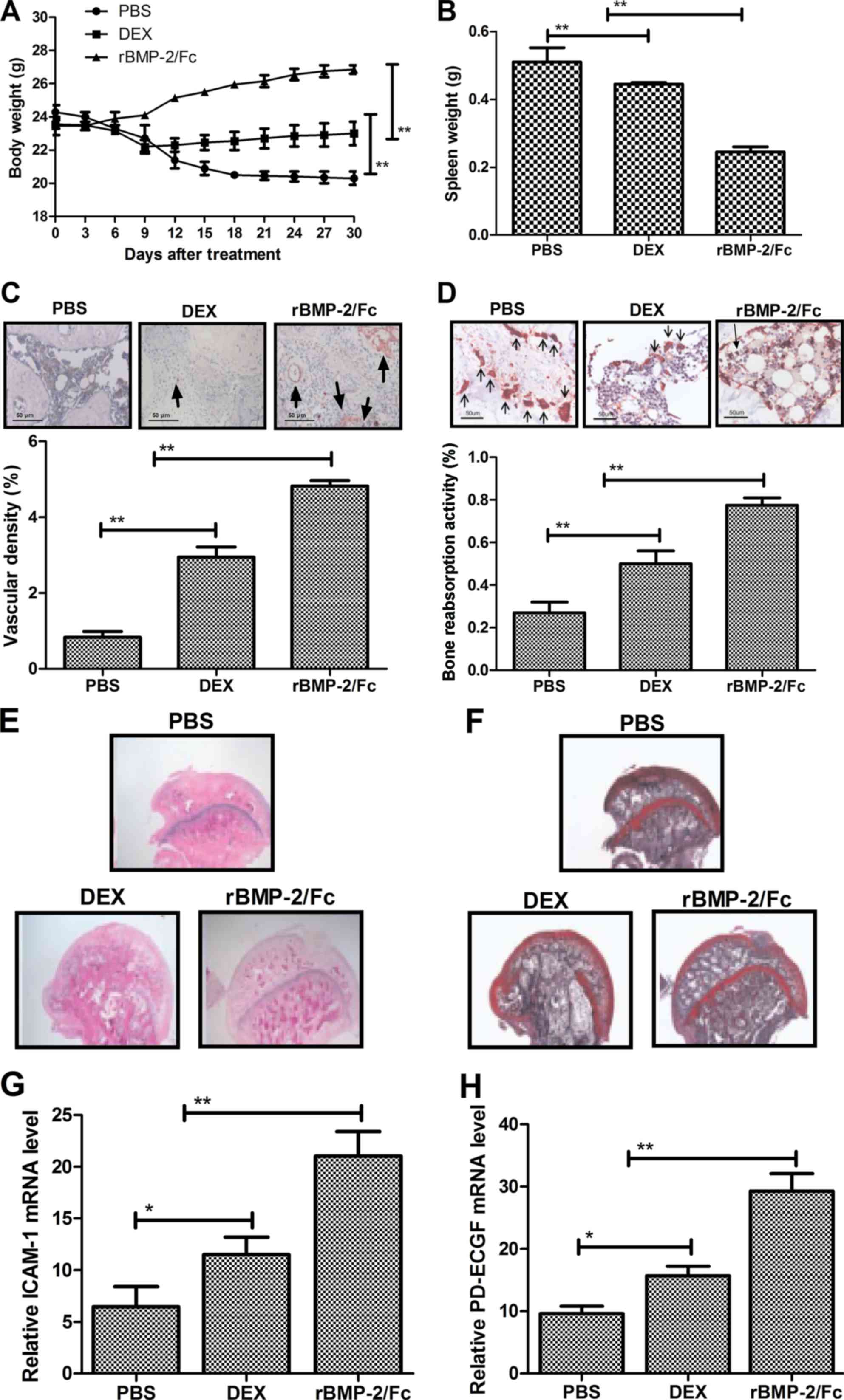|
1
|
Onuora S: Osteoarthritis: Molecular
imaging detects activated macrophages. Nat Rev Rheumatol.
12:3132016. View Article : Google Scholar : PubMed/NCBI
|
|
2
|
Shepherd J, Cooper K, Harris P, Picot J
and Rose M: The clinical effectiveness and cost-effectiveness of
abatacept, adalimumab, etanercept and tocilizumab for treating
juvenile idiopathic arthritis: A systematic review and economic
evaluation. Health Technol Assess. 20:1–222. 2016. View Article : Google Scholar
|
|
3
|
Bhadu D, Das SK, Dhakad U, Sharma M,
Srivastava D and Tripathy SR: Synovial chondromatosis involving
multiple joints in rheumatoid arthritis: A case report review of
the literature. Int J Rheum Dis. 20:2148–2151. 2017. View Article : Google Scholar : PubMed/NCBI
|
|
4
|
Ma YW, Jiang DL, Zhang D, Wang XB and Yu
XT: Radial extracorporeal shock wave therapy in a person with
advanced osteonecrosis of the femoral head: A case report. Am J
Phys Med Rehabil. 95:e133–e139. 2016. View Article : Google Scholar : PubMed/NCBI
|
|
5
|
Lee GW, Park KS, Kim DY, Lee YM,
Eshnazarov KE and Yoon TR: Results of total hip arthroplasty after
core decompression with tantalum rod for osteonecrosis of the
femoral head. Clin Orthop Surg. 8:38–44. 2016. View Article : Google Scholar : PubMed/NCBI
|
|
6
|
Zhu HY, Gao YC, Wang Y and Zhang CQ:
Circulating exosome levels in the diagnosis of steroid-induced
osteonecrosis of the femoral head. Bone Joint Res. 5:276–279. 2016.
View Article : Google Scholar : PubMed/NCBI
|
|
7
|
Kuroda Y, So K, Goto K and Matsuda S:
Extremely early stage osteonecrosis of the femoral head in a
patient with hip pain secondary systemic steroid pulse therapy for
Vogt-Koyanagi-Harada syndrome: A case report. Int J Surg Case Rep.
25:97–101. 2016. View Article : Google Scholar : PubMed/NCBI
|
|
8
|
Cabrolier J and Molina M: Is instillation
of bone marrow stem cells at the time of core decompression useful
for osteonecrosis of the femoral head? Medwave. 16 Suppl
1:e64062016.(In Spanish). View Article : Google Scholar : PubMed/NCBI
|
|
9
|
Farzaei MH, Farzaei F, Abdollahi M,
Abbasabadi Z, Abdolghaffari AH and Mehraban B: A mechanistic review
on medicinal plants used for rheumatoid arthritis in traditional
Persian medicine. J Pharm Pharmacol. 68:1233–11248. 2016.
View Article : Google Scholar : PubMed/NCBI
|
|
10
|
Rajeev A, Choudhry N, Shaikh M and Newby
M: Lumbar facet joint septic arthritis presenting atypically as
acute abdomen-A case report and review of the literature. Int J Sur
Case Rep. 25:243–245. 2016. View Article : Google Scholar
|
|
11
|
Meyers MH: Osteonecrosis of the femoral
head. Pathogenesis and long-term results of treatment. Clin Orthop
Relat Res. 51–61. 1988.PubMed/NCBI
|
|
12
|
Gold EW and Cangemi PJ: Incidence and
pathogenesis of alcohol-induced osteonecrosis of the femoral head.
Clin Orthop Relat Res. 222–226. 1979.PubMed/NCBI
|
|
13
|
Vignon G and Meunier P: Pathogenesis of
primary osteonecrosis of the femoral head. Hypothesis of the
subchondral fatigue fracture. Nouv Presse Med. 2:1751–1753.
1973.PubMed/NCBI
|
|
14
|
Yamamoto T and Iwamoto Y: Corticosteroids
treatments and osteonecrosis of the femoral head. Fukuoka Igaku
Zasshi. 106:47–53. 2015.(In Japanese). PubMed/NCBI
|
|
15
|
Wang C, Peng J and Lu S: Summary of the
various treatments for osteonecrosis of the femoral head by
mechanism: A review. Exp Ther Med. 8:700–706. 2014. View Article : Google Scholar : PubMed/NCBI
|
|
16
|
Pelaz A, Junquera L, Gallego L,
Garcia-Consuegra L, Junquera S and Gomez C: Alternative treatments
for oral bisphosphonate-related osteonecrosis of the jaws: A pilot
study comparing fibrin rich in growth factors and teriparatide. Med
Oral Patol Oral Cir Bucal. 19:e320–e326. 2014. View Article : Google Scholar : PubMed/NCBI
|
|
17
|
Meloni MC, Hoedemaeker WR and Fornasier V:
Failed vascularized fibular graft in treatment of osteonecrosis of
the femoral head. A histopathological analysis. Joints. 4:24–30.
2016. View Article : Google Scholar : PubMed/NCBI
|
|
18
|
Furuya T, Maeda S, Momohara S, Taniguchi A
and Yamanaka H: Dental treatments, tooth extractions and
osteonecrosis of the jaw in Japanese patients with rheumatoid
arthritis: Results from the IORRA cohort study. J Bone Miner Metab.
35:344–350. 2017. View Article : Google Scholar : PubMed/NCBI
|
|
19
|
Sadile F, Bernasconi A, Russo S and
Maffulli N: Core decompression versus other joint preserving
treatments for osteonecrosis of the femoral head: A meta-analysis.
Br Med Bull. 118:33–49. 2016. View Article : Google Scholar : PubMed/NCBI
|
|
20
|
Singh K, Massel DH, Mayo BC, Bohl DD, Long
WW and Modi KD: Bone morphogenetic proteins in lumbar arthrodesis:
What is all the debate about? Commentary on an article by Daniel C.
Beachler, PhD, MHS, et al: ‘Bone morphogenetic protein use
and cancer risk among patients undergoing lumbar arthrodesis: A
case-cohort study using the SEER-medicare database’. J Bone Joint
Surg Am. 98:e572016. View Article : Google Scholar : PubMed/NCBI
|
|
21
|
Aruwajoye OO, Aswath PB and Kim HKW:
Material properties of bone in the femoral head treated with
ibandronate and BMP-2 following ischemic osteonecrosis. J Orthop
Res. 35:1453–1460. 2017. View Article : Google Scholar : PubMed/NCBI
|
|
22
|
Rahim I, Salt S and Heliotis M: Successful
long-term mandibular reconstruction and rehabilitation using
non-vascularised autologous bone graft and recombinant human BMP-7
with subsequent endosseous implant in a patient with
bisphosphonate-related osteonecrosis of the jaw. Br J Oral
Maxillofac Surg. 53:870–874. 2015. View Article : Google Scholar : PubMed/NCBI
|
|
23
|
Wang W, Liu L, Dang X, Ma S, Zhang M and
Wang K: The effect of core decompression on local expression of
BMP-2, PPAR-γ and bone regeneration in the steroid-induced femoral
head osteonecrosis. BMC Musculoskelet Disord. 13:1422012.
View Article : Google Scholar : PubMed/NCBI
|
|
24
|
Grcevic D, Jajic Z, Kovacic N, Lukic IK,
Velagic V, Grubisic F, Ivcevic S and Marusic A: Peripheral blood
expression profiles of bone morphogenetic proteins, tumor necrosis
factor-superfamily molecules and transcription factor Runx2 could
be used as markers of the form of arthritis, disease activity and
therapeutic responsiveness. J Rheumatol. 37:246–256. 2010.
View Article : Google Scholar : PubMed/NCBI
|
|
25
|
Lories RJ and Luyten FP: Bone
morphogenetic proteins in destructive and remodeling arthritis.
Arthritis Res Ther. 9:2072007. View
Article : Google Scholar : PubMed/NCBI
|
|
26
|
Postigo J, Iglesias M, Alvarez P, Jesús
Augustin J, Buelta L, Merino J and Merino R: Bone morphogenetic
protein and activin membrane-bound inhibitor, a transforming growth
factor beta rheostat that controls murine treg cell/Th17 cell
differentiation and the development of autoimmune arthritis by
reducing interleukin-2 signaling. Arth Rheum. 68:1551–1562. 2016.
View Article : Google Scholar
|
|
27
|
Brescia AC, Simonds MM, McCahan SM,
Fawcett PT and Rose CD: The role of transforming growth factor β
signaling in fibroblast-like synoviocytes from patients with
oligoarticular juvenile idiopathic arthritis: Dysregulation of
transforming growth factor β signaling, including overexpression of
bone morphogenetic protein 4, may lead to a chondrocyte phenotype
and may contribute to bony hypertrophy. Arth Rheum. 66:1352–1362.
2014. View Article : Google Scholar
|
|
28
|
Okubo Y, Bessho K, Fujimura K, Kusumoto K,
Ogawa Y and Iizuka T: Osteogenesis by recombinant human bone
morphogenetic protein-2 at skeletal sites. Clin Orthop Relat Res.
295–301. 2000. View Article : Google Scholar : PubMed/NCBI
|
|
29
|
Ozec Y, Ozturk M, Kýlýç E, Yeler H, Göze F
and Gümüş C: Effect of recombinant human bone morphogenetic
protein-2 on mandibular distraction osteogenesis. J Craniofac Surg.
17:80–83. 2006. View Article : Google Scholar : PubMed/NCBI
|
|
30
|
Marinova-Mutafchieva L, Taylor P, Funa K,
Maini RN and Zvaifler NJ: Mesenchymal cells expressing bone
morphogenetic protein receptors are present in the rheumatoid
arthritis joint. Arth rheumatism. 43:2046–2055. 2000. View Article : Google Scholar
|
|
31
|
Issa JP, do Nascimento C, Lamano T,
Iyomasa MM, Sebald W and de Albuquerque RF Jr: Effect of
recombinant human bone morphogenetic protein-2 on bone formation in
the acute distraction osteogenesis of rat mandibles. Clin Oral
Implants Res. 20:1286–1292. 2009. View Article : Google Scholar : PubMed/NCBI
|
|
32
|
Yonezawa H, Harada K, Ikebe T, Shinohara M
and Enomoto S: Effect of recombinant human bone morphogenetic
protein-2 (rhBMP-2) on bone consolidation on distraction
osteogenesis: A preliminary study in rabbit mandibles. J
Craniomaxillofac Surg. 34:270–276. 2006. View Article : Google Scholar : PubMed/NCBI
|
|
33
|
Tekari A, May RD, Frauchiger DA, Chan SC,
Benneker LM and Gantenbein B: The BMP2 variant L51P restores the
osteogenic differentiation of human mesenchymal stromal cells in
the presence of intervertebral disc cells. Eur Cell Mater.
33:197–210. 2017. View Article : Google Scholar : PubMed/NCBI
|
|
34
|
Zalavras CG and Lieberman JR:
Osteonecrosis of the femoral head: evaluation and treatment. J Am
Acad Orthop Surg. 22:455–464. 2014. View Article : Google Scholar : PubMed/NCBI
|
|
35
|
Greenhill CJ, Jones GW, Nowell MA, Newton
Z, Harvey AK, Moideen AN, Collins FL, Bloom AC, Coll RC, Robertson
AA, et al: Interleukin-10 regulates the inflammasome-driven
augmentation of inflammatory arthritis and joint destruction.
Arthritis Res Ther. 16:4192014. View Article : Google Scholar : PubMed/NCBI
|
|
36
|
Davey G and Wu Z: Attitudes in China
toward the use of animals in laboratory research. Altern Lab Anim.
35:313–316. 2007.PubMed/NCBI
|
|
37
|
Kim HB, Lee SW, Mun CH, Yoon JY, Pai J,
Shin I, Park YB, Lee SK and Cho JW: O-linked N-acetylglucosamine
glycosylation of p65 aggravated the inflammation in both
fibroblast-like synoviocytes stimulated by tumor necrosis factor-α
and mice with collagen induced arthritis. Ar Res Ther. 17:2482015.
View Article : Google Scholar
|
|
38
|
Elsafadi M, Manikandan M, Dawud RA, Alajez
NM, Hamam R, Alfayez M, Kassem M, Aldahmash A and Mahmood A:
Transgelin is a TGF β-inducible gene that regulates osteoblastic
and adipogenic differentiation of human skeletal stem cells through
actin cytoskeleston organization. Cell Death Dis. 7:e23212016.
View Article : Google Scholar : PubMed/NCBI
|
|
39
|
Figueiredo CP, Simon D, Englbrecht M,
Haschka J, Kleyer A, Bayat S, Hueber A, Pereira RM, Rech J and
Schett G: Quantification and impact of secondary osteoarthritis in
patients with anti-citrullinated protein antibodies positive
rheumatoid arthritis. Arth Rheumatol. 68:2114–2121. 2016.
View Article : Google Scholar
|
|
40
|
Li H, Zhang L, Guo W and Xu D: Development
of a genetically engineered Escherichia coli strain for plasmid
transformation in Corynebacterium glutamicum. J Microbiol Methods.
131:156–160. 2016. View Article : Google Scholar : PubMed/NCBI
|
|
41
|
Livak KJ and Schmittgen TD: Analysis of
relative gene expression data using real-time quantitative PCR and
the 2(-Delta Delta C(T)) method. Methods. 25:402–408. 2001.
View Article : Google Scholar : PubMed/NCBI
|
|
42
|
Sun Y, Jiang M, Hou B, Lu C, Lei Y, Ma Z
and Gu X: Mas-related gene (Mrg) C activation attenuates bone
cancer pain via modulating Gi and NR2B. PLoS One. 11:e01548512016.
View Article : Google Scholar : PubMed/NCBI
|
|
43
|
Bai F, Tian H, Niu Z, Liu M, Ren G, Yu Y,
Sun T, Li S and Li D: Chimeric anti-IL-17 full-length monoclonal
antibody is a novel potential candidate for the treatment of
rheumatoid arthritis. Int J Mol Med. 33:711–721. 2014. View Article : Google Scholar : PubMed/NCBI
|
|
44
|
Kinsella S, Murphy K, Breen M, O'Neill S,
McLaughlin P, Coyle J, Bogue C, O'Neill F, Moore N, McGarrigle A,
et al: Comparison of single CT scan assessment of bone mineral
density, vascular calcification and fat mass with standard clinical
measurements in renal transplant subjects: The ABC HeART study. BMC
Nephrol. 16:1882015. View Article : Google Scholar : PubMed/NCBI
|
|
45
|
Morimoto Y, Hoshino H, Sakurai T, Terakawa
S and Nagano A: Quantitative evaluation of bone resorption activity
of osteoclast-like cells by measuring calcium phosphate resorbing
area using incubator-facilitated and video-enhanced microscopy.
Microsc Res Tech. 72:317–322. 2009. View Article : Google Scholar : PubMed/NCBI
|
|
46
|
Zhu EF, Gai SA, Opel CF, Kwan BH, Surana
R, Mihm MC, Kauke MJ, Moynihan KD, Angelini A, Williams RT, et al:
Synergistic innate and adaptive immune response to combination
immunotherapy with anti-tumor antigen antibodies and extended serum
half-life IL-2. Cancer Cell. 27:489–501. 2015. View Article : Google Scholar : PubMed/NCBI
|
|
47
|
Pierce TP, Elmallah RK, Jauregui JJ, Poola
S, Mont MA and Delanois RE: A current review of non-vascularized
bone grafting in osteonecrosis of the femoral head. Curr Rev
Musculoskelet Med. 8:240–245. 2015. View Article : Google Scholar : PubMed/NCBI
|
|
48
|
Pierce TP, Jauregui JJ, Elmallah RK,
Lavernia CJ, Mont MA and Nace J: A current review of core
decompression in the treatment of osteonecrosis of the femoral
head. Curr Rev Musculoskelet Med. 8:228–232. 2015. View Article : Google Scholar : PubMed/NCBI
|
|
49
|
Peng WX and Wang L: Adenovirus-mediated
expression of bmp-2 and BFGF in bone marrow mesenchymal stem cells
combined with demineralized bone matrix for repair of femoral head
osteonecrosis in beagle dogs. Cell Physiol Biochem. 43:1648–1662.
2017. View Article : Google Scholar : PubMed/NCBI
|
|
50
|
Shi L, Sun W, Gao F, Cheng L and Li Z:
Heterotopic ossification related to the use of recombinant human
BMP-2 in osteonecrosis of femoral head. Medicine (Baltimore).
96:e74132017. View Article : Google Scholar : PubMed/NCBI
|
|
51
|
Mishima H, Sugaya H, Yoshioka T, Aoto K,
Wada H, Akaogi H and Ochiai N: The safety and efficacy of combined
autologous concentrated bone marrow grafting and low-intensity
pulsed ultrasound in the treatment of osteonecrosis of the femoral
head. Eur J Orthop Surg Traumatol. 26:293–298. 2016. View Article : Google Scholar : PubMed/NCBI
|
|
52
|
Kianmehr N, Bidari A, Mofidi M and Bahar
N: Silent osteonecrosis of the femoral head following high-dose
corticosteroids in patients with systemic rheumatic diseases. Med J
Islam Repub Iran. 29:2592015.PubMed/NCBI
|
|
53
|
Jin H, Xu T, Chen Q, Wu C, Wang P, Mao Q,
Zhang S, Shen J and Tong P: The fate and distribution of autologous
bone marrow mesenchymal stem cells with intra-arterial infusion in
osteonecrosis of the femoral head in dogs. Stem Cell Int.
2016:86161432016.
|
|
54
|
Sasikumar KP, Elavarasu S and Gadagi JS:
The application of bone morphogenetic proteins to periodontal and
peri-implant tissue regeneration: A literature review. J Pharm
Bioallied Sci. 4 Suppl 2:S427–S430. 2012. View Article : Google Scholar : PubMed/NCBI
|
|
55
|
Bragdon B, Moseychuk O, Saldanha S, King
D, Julian J and Nohe A: Bone morphogenetic proteins: A critical
review. Cell Signal. 23:609–620. 2011. View Article : Google Scholar : PubMed/NCBI
|
|
56
|
Hustedt JW and Blizzard DJ: The
controversy surrounding bone morphogenetic proteins in the spine: A
review of current research. Yale J Biol Med. 87:549–561.
2014.PubMed/NCBI
|
|
57
|
Dagostino PR, Whitmore RG, Smith GA,
Maltenfort MG and Ratliff JK: Impact of bone morphogenetic proteins
on frequency of revision surgery, use of autograft bone and total
hospital charges in surgery for lumbar degenerative disease: Review
of the nationwide inpatient sample from 2002 to 2008. Spine J.
14:20–30. 2014. View Article : Google Scholar : PubMed/NCBI
|
|
58
|
Thawani JP, Wang AC, Than KD, Lin CY, La
Marca F and Park P: Bone morphogenetic proteins and cancer: Review
of the literature. Neurosurgery. 66:233–246. 2010. View Article : Google Scholar : PubMed/NCBI
|
|
59
|
Ye L, Bokobza SM and Jiang WG: Bone
morphogenetic proteins in development and progression of breast
cancer and therapeutic potential (review). Int J Mol Med.
24:591–597. 2009. View Article : Google Scholar : PubMed/NCBI
|
|
60
|
Uzun G, Mutluoglu M, Ersen O and Yildiz S:
Hyperbaric oxygen therapy in the treatment of osteonecrosis of the
femoral head: A review of the current literature. Undersea Hyperb
Med. 43:189–199. 2016.PubMed/NCBI
|
|
61
|
Wood TJ, Hoppe DJ, Winemaker M and Adili
A: Bilateral osteonecrosis of the femoral head during pregnancy
following two corticosteroid injections: A case report and review
of the literature. Cureus. 8:e5562016.PubMed/NCBI
|
|
62
|
Hong GJ, Lin N, Chen LL, Chen XB and He W:
Association between vascular endothelial growth factor gene
polymorphisms and the risk of osteonecrosis of the femoral head:
Systematic review. Biomed Rep. 4:92–96. 2016. View Article : Google Scholar : PubMed/NCBI
|
|
63
|
Papakostidis C, Tosounidis TH, Jones E and
Giannoudis PV: The role of ‘cell therapy’ in osteonecrosis of the
femoral head. A systematic review of the literature and
meta-analysis of 7 studies. Acta Orthop. 87:72–78. 2016. View Article : Google Scholar : PubMed/NCBI
|
|
64
|
Wang B, Geng Q, Hu J, Shao J, Ruan J and
Zheng J: Platelet-rich plasma reduces skin flap inflammatory cells
infiltration and improves survival rates through induction of
angiogenesis: An experiment in rabbits. J Plas Surg Hand Surg.
50:239–245. 2016. View Article : Google Scholar
|
|
65
|
Radke S, Battmann A, Jatzke S, Eulert J,
Jakob F and Schutze N: Expression of the angiomatrix and angiogenic
proteins CYR61, CTGF and VEGF in osteonecrosis of the femoral head.
J Orthop Res. 24:945–952. 2006. View Article : Google Scholar : PubMed/NCBI
|
|
66
|
Lebouvier A, Poignard A, Cavet M, Amiaud
J, Leotot J, Hernigou P, Rahmouni A, Bierling P, Layrolle P and
Rouard H: Development of a simple procedure for the treatment of
femoral head osteonecrosis with intra-osseous injection of bone
marrow mesenchymal stromal cells: Study of their biodistribution in
the early time points after injection. Stem Cell Res Ther.
6:682015. View Article : Google Scholar : PubMed/NCBI
|
|
67
|
Chiu WC, Lai YP and Chou MY: Humanization
and characterization of an anti-human TNF-α murine monoclonal
antibody. PLoS One. 6:e163732011. View Article : Google Scholar : PubMed/NCBI
|
|
68
|
Weisman MH: TNF and anti-TNF treatment in
rheumatoid arthritis (RA). What we know and what we still need to
know. Ryumachi. Rheumatism. 37:142–143. 1997.
|
|
69
|
Elliot MJ, Maini RN, Feldmann M, Long-Fox
A, Charles P, Katasikis P, Brennan FM, Bijl H, Ghrayeb J and Woody
JN: Treatment of rheumatoid arthritis with chimeric monoclonal
antibodies to tumor necrosis factor alpha. Arthritis Rheum. 58 2
Suppl:S92–S101. 2008. View Article : Google Scholar : PubMed/NCBI
|
|
70
|
Segal B, Rhodus NL and Patel K: Tumor
necrosis factor (TNF) inhibitor therapy for rheumatoid arthritis.
Oral Surg Oral Med Oral Pathol Oral Radiol Endod. 106:778–787.
2008. View Article : Google Scholar : PubMed/NCBI
|
|
71
|
Wang J, Wang K, Shi Z and Zhang M:
Osteoprotegerin mRNA/receptor activator of NF-kappaB ligand mRNA
expressions in bone tissues of glucocorticoid-induced osteonecrosis
of the femoral head. Zhongguo Xiu Fu Chong Jian Wai Ke Za Zhi.
22:1161–1164. 2008.(In Chinese). PubMed/NCBI
|


















